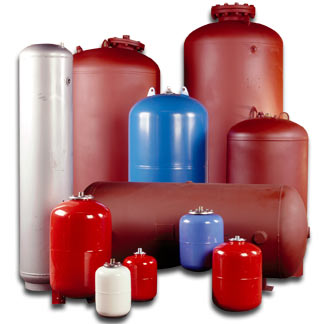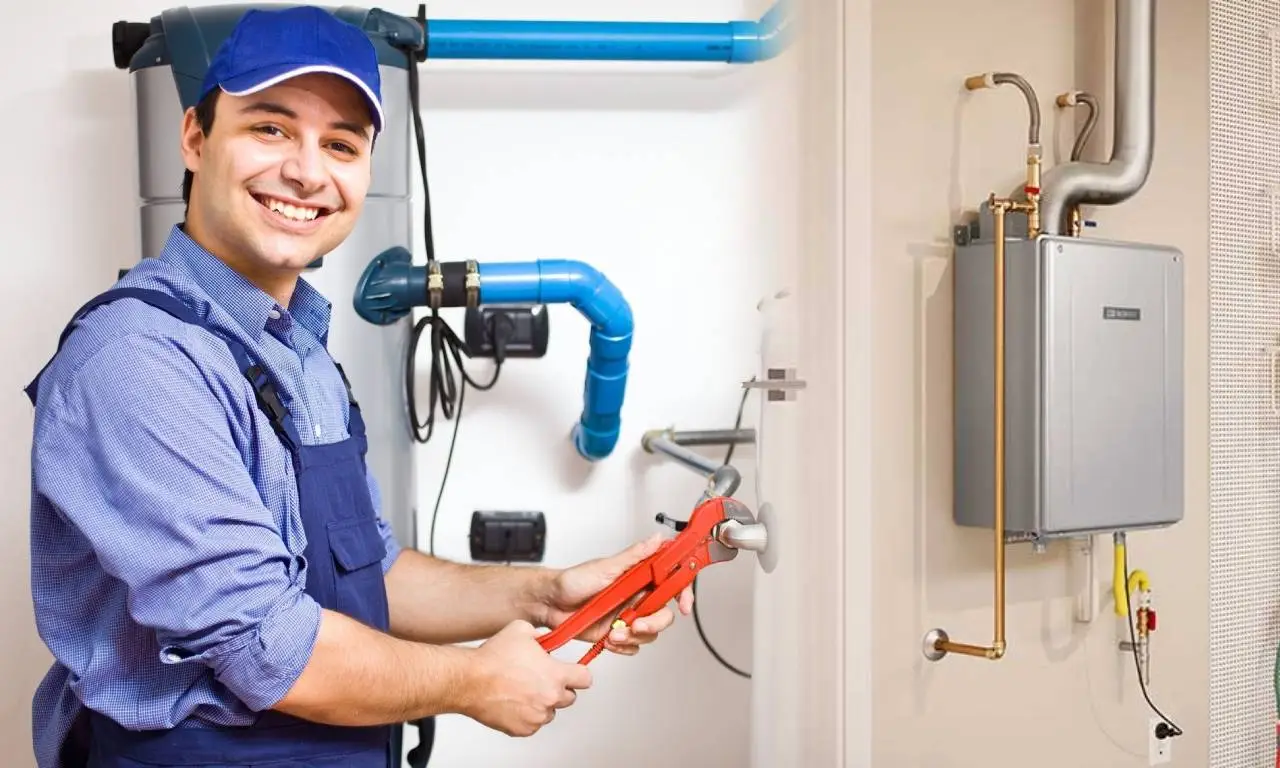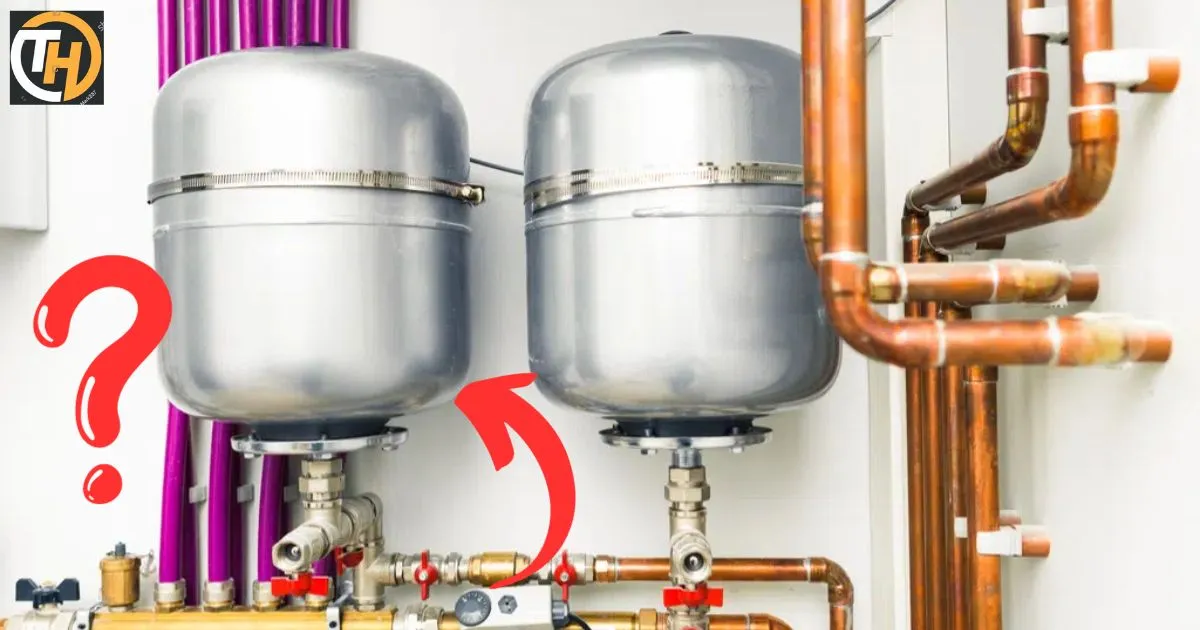Hot water is a modern-day luxury that many of us take for granted. Whether it’s for a soothing shower or to clean dishes with ease, having a reliable source of hot water is indispensable. In the realm of hot water heaters, there are various components working harmoniously to ensure your home is equipped with a steady supply of heated water. One such component, often overlooked yet crucial, is the expansion tank on a hot water heater.
In this comprehensive guide, we’ll delve into the world of hot water heaters and explore the significance of expansion tanks. You’ll gain an understanding of how expansion tanks function, when and why you might need one, the different types available, and the steps for proper installation and maintenance.
We’ll also touch on the benefits of using an expansion tank, sizing considerations, regulations, and codes, troubleshooting common issues, and even guide you on DIY replacement if the need arises.
The Benefits of a Water Heater Expansion Tank
An expansion tank offers several benefits for your water heater and plumbing system. It acts as a safety valve, preventing excessive pressure build-up, which can lead to leaks and damage. This extends the lifespan of your water heater and reduces the risk of costly repairs. By absorbing thermal expansion, they prevent water hammering, a phenomenon where pipes bang and create loud noises, which can be both disruptive and damaging.
What if my water heater doesn’t have an expansion tank?
If your water heater doesn’t have an expansion tank, it’s essential to assess whether your specific system requires one. The absence of an expansion tank can lead to problems like water hammering, pressure-related issues, or potential damage to your plumbing system.
In such cases, it’s advisable to consult a professional plumber to determine whether installing an expansion tank is necessary for your hot water system. They can assess your setup, local regulations, and specific requirements to ensure the safe and efficient operation of your water heater.
How a Water Heater Expansion Tank Works
Expansion tanks, including the Expansion Tank On A Hot Water Heater, operate on a simple principle. They consist of two main components: a sealed tank and a diaphragm. The diaphragm divides the tank into two sections. The lower section is connected to the water line, while the upper section contains air or gas, typically nitrogen.
As the water inside the hot water heater heats, it expands, increasing pressure in the water line. Instead of allowing this pressure to build up and potentially cause damage, the expansion tank’s diaphragm flexes to accommodate the expanded water volume. This effectively absorbs the excess pressure, preventing it from affecting the plumbing system or appliances.
When the demand for hot water decreases, and the water cools, the diaphragm pushes the stored water back into the system. This keeps the pressure within a safe range. Expansion tanks thus act as a buffer, ensuring the hot water heater operates efficiently and that the plumbing system remains intact.
Signs You Need an Expansion Tank
An expansion tank on a hot water heater is not always necessary, and their requirement depends on your specific hot water system and local plumbing codes. Nevertheless, there are telltale signs that you may benefit from an expansion tank. If you notice water hammering (the banging noise in your pipes), leaks from the temperature and pressure relief valve, or a fluctuation in water pressure, these could be indicators that your hot water system lacks an expansion tank.
In addition to these signs, certain factors may necessitate the installation of an expansion tank. These include a closed plumbing system (where water has no direct route back to the main supply line) or a check valve installed on the supply line, which can prevent water from flowing back into the supply line and increase pressure within the system.
Types of Expansion Tanks

Expansion tanks come in two main types: diaphragm and bladder tanks. Diaphragm tanks have a rubber diaphragm that separates the water from the air, while bladder tanks feature a replaceable bladder that serves the same purpose. Both types effectively manage thermal expansion, but bladder tanks tend to have a longer lifespan due to their replaceable bladders.
Additionally, there are variations in expansion tank design. Some are designed to be mounted vertically, while others are horizontal. The choice between these types depends on the available space and the specific requirements of your hot water system.
Installation of an Expansion Tank
Proper installation of an expansion tank is crucial for its effectiveness and your hot water system’s safety. It typically involves attaching the expansion tank to the cold water line, either on the inlet or outlet side of the water heater. The tank should be placed in an upright position to allow for optimal operation. The air pressure within the tank should be adjusted to match the static water pressure in the plumbing system.
It’s important to ensure the expansion tank is properly sized for your system. An undersized tank won’t adequately manage thermal expansion, while an oversized one may lead to overpressurization issues. Expansion tanks come with specific instructions for installation, and it’s advisable to follow them diligently or consult a professional if you’re unsure.
Maintenance and Safety
Expansion tanks are relatively low-maintenance components of your hot water system. However, it’s essential to periodically check the tank’s air pressure and adjust it if needed. The air pressure should match the static water pressure in the plumbing system. Some expansion tanks come with a built-in pressure gauge for easy monitoring.
Safety is also a vital aspect of expansion tank maintenance. The temperature and pressure relief valve on the hot water heater should be tested regularly to ensure it’s functioning correctly. This valve is a critical safety feature, as it releases pressure and prevents the tank from overpressurizing.
Benefits of Using an Expansion Tank
The primary benefit of using an expansion tank is enhanced safety and longevity for your hot water system. By preventing excessive pressure build-up, it reduces the risk of leaks, water hammering, and potential damage to the water heater and plumbing.
Additionally, expansion tanks help maintain consistent water pressure, which ensures your hot water system operates smoothly. This results in better water flow and an improved overall experience when using hot water.
Expansion Tank Sizing
The correct sizing of an expansion tank is crucial for its efficient operation. The size of the expansion tank is determined by factors such as the water heater’s capacity and the temperature increase in the water as it heats. Oversizing or undersizing the tank can lead to inefficiencies or pressure-related issues. Consulting a professional or using sizing charts provided by manufacturers can help you select the appropriate tank size for your hot water system.
Regulations and Codes
The installation of expansion tanks is subject to local plumbing codes and regulations. It’s essential to ensure that your installation complies with these standards, as non-compliance can lead to legal and safety issues. Plumbing codes often dictate whether an expansion tank is required based on the type of water heater, the presence of a check valve, and the local water pressure.
Troubleshooting Expansion Tank Issues
While expansion tanks are designed to function smoothly, issues can occasionally arise. Common problems include a loss of air pressure, waterlogged bladders in bladder tanks, and leaks. Troubleshooting these issues may involve repressurizing the tank, draining and recharging it, or even replacing the expansion tank if it’s beyond repair.
When to Consult a Professional

While some aspects of expansion tank maintenance and troubleshooting can be DIY tasks, there are situations where consulting a professional is essential. If you’re unsure about the correct sizing, installation, or maintenance of an expansion tank, it’s advisable to seek expert guidance. Likewise, if you encounter complex issues, such as leaks or damage to the tank, a professional can address the problem safely and effectively.
DIY Expansion Tank Replacement
In some cases, replacing an expansion tank can be a DIY project, but does a tankless water heater need an expansion tank? However, it’s essential to follow the manufacturer’s guidelines and ensure that you have the necessary tools and knowledge. If you’re uncomfortable with any aspect of the replacement process, it’s best to enlist the help of a professional plumber or technician.
Summary of the Article
| Section | Summary |
| Introduction | Introduction to the topic of expansion tanks on water heaters. |
| Understanding Hot Water Heaters | Explanation of hot water heater systems and how they function. |
| The Role of Expansion Tanks | Detailed insight into the purpose and significance of expansion tanks. |
| How Expansion Tanks Work | Explanation of the mechanics behind the operation of expansion tanks. |
| Signs You Need an Expansion Tank | Identifying indicators that suggest the need for an expansion tank. |
| Types of Expansion Tanks | An overview of the various types of expansion tanks available. |
| Installation of an Expansion Tank | Step-by-step guide on how to properly install an expansion tank. |
| Maintenance and Safety | Tips on maintaining expansion tanks and ensuring safety. |
| Benefits of Using an Expansion Tank | Enumerating the advantages of having an expansion tank in the system. |
| Expansion Tank Sizing | Guidance on how to choose the right size of an expansion tank. |
| Regulations and Codes | Information on local regulations and codes regarding expansion tanks. |
| Troubleshooting Expansion Tank Issues | Tips for identifying and resolving common expansion tank problems. |
| When to Consult a Professional | Situations where professional help is necessary for expansion tank issues. |
| DIY Expansion Tank Replacement | A guide for those considering replacing their expansion tank themselves. |
| Conclusion | A brief summary and closing thoughts on the importance of expansion tanks. |
This summary provides an overview of the main points covered in the article.
FAQs
Do I really need an expansion tank on my water heater?
An expansion tank may not be necessary for all water heaters, but it’s vital for systems with closed-loop plumbing to prevent pressure build-up, extend the water heater’s lifespan, and ensure safety.
What happens if you don’t install an expansion tank?
Without an expansion tank, excess pressure can cause leaks, damage, and water heater failure, leading to costly repairs and a shorter appliance lifespan.
What is the purpose and function of an expansion tank?
The primary function of an expansion tank is to absorb thermal expansion, preventing pressure fluctuations and maintaining the integrity of the plumbing system and water heater.
What happens if the expansion tank pressure is too high?
Excessive pressure in the expansion tank can strain the system, potentially causing leaks, damaging components, and affecting overall water heater performance. Regular maintenance and monitoring are crucial to maintain the correct pressure levels.
Conclusion
In conclusion, expansion tanks are silent protectors of your hot water system, ensuring that the system’s integrity remains intact. As you enjoy the comfort of hot water in your daily life, spare a thought for these unassuming but invaluable components. Whether you have a tankless or tank-type water heater, understanding the importance of expansion tanks can help you maintain a trouble-free hot water experience.
Regular maintenance, compliance with regulations, and professional assistance when needed are key factors in ensuring the proper function of expansion tanks and, consequently, your hot water system’s longevity and safety.











